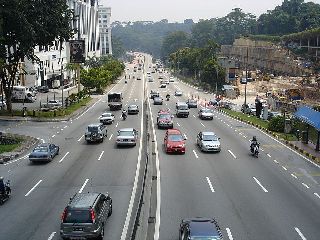 Despite slower-than-expected growth in major industrial countries, Developing Asia remains the fastest growing region globally as key economies in the region move ahead with structural reforms, says a new Asian Development Bank (ADB) report.
Despite slower-than-expected growth in major industrial countries, Developing Asia remains the fastest growing region globally as key economies in the region move ahead with structural reforms, says a new Asian Development Bank (ADB) report.
In an update of its flagship annual economic publication, Asian Development Outlook 2014 (ADO 2014), ADB kept its forecasts for growth of gross domestic product (GDP) for the region at 6.2 percent in 2014 and 6.4 percent in 2015. The region grew 6.1 percent in 2013.
Developing Asia comprises the 45 ADB developing member- countries.
“Slowing external demand has hurt some economies in the region but as a whole Asia and the Pacific is on track for firm growth in 2014 and 2015,” said ADB chief economist Shang-Jin Wei in launching the report. “Moving forward structural reform processes in the [People’s Republic of] China, India, and Indonesia—the region’s three biggest economies—will be critical in shaping the growth outlook.”
Following severe winter weather in the United States in the first quarter, a value-added tax hike in Japan in the second quarter, and continuing weakness in the euro area, the world’s major industrial economies recorded virtually no growth in the first half of the year. They are now forecast to expand by 1.5 percent collectively in 2014, down 0.4 percentage points from the ADO 2014 forecast in April, before growth picks up to 2.1 percent in 2015.
Stable growth for the region overall masks shifting fortunes across subregions, said the report.
GDP growth in East Asia will remain at 6.7 percent in 2014 and 2015, as moderating growth in China and Hong Kong, China—and a slowdown in Mongolia—are offset by export-driven upswings in Korea and Taiwan.
Performing better than expected, South Asia’s growth forecast for 2014 is raised slightly to 5.4 percent, reflecting strengthening in Bangladesh and Pakistan on higher exports and remittances. Regional growth will pick up to 6.1 percent in 2015, 0.3 percentage points higher than previously forecast.
Southeast Asia will see stronger growth next year after a surprisingly soft 2014. Growth this year is now projected at 4.6 percent, down from 5 percent forecast in ADO 2014 and actual growth of 5 percent in 2013. Domestic demand has moderated in some of the bigger economies, with GDP forecasts trimmed for Indonesia, the Philippines, Singapore, Thailand, and Vietnam. By contrast, a rebound in exports from Malaysia has helped to propel considerably stronger economic growth there. Next year, better performance in the major industrial economies and Thailand’s recovery from its slump will spur Southeast Asian growth to 5.3 percent.
Growth in Central Asia is hobbled by a slowdown in the Russian Federation. Underperforming ADO 2014 projections, growth in the subregion is now projected to decelerate to 5.6 percent in 2014 as activity slows in Armenia, Kazakhstan, the Kyrgyz Republic, Turkmenistan, and Uzbekistan. The forecast for 2015 is lowered to 5.9 percent on revisions for Armenia, Georgia, Kazakhstan, the Kyrgyz Republic, and Uzbekistan.
Prospects in the Pacific have dimmed because of damage caused by torrential rains in Solomon Islands in early 2014, disappointing business activity in Timor-Leste, and a downturn in construction and tourism in Palau.
Photo: Azreey




